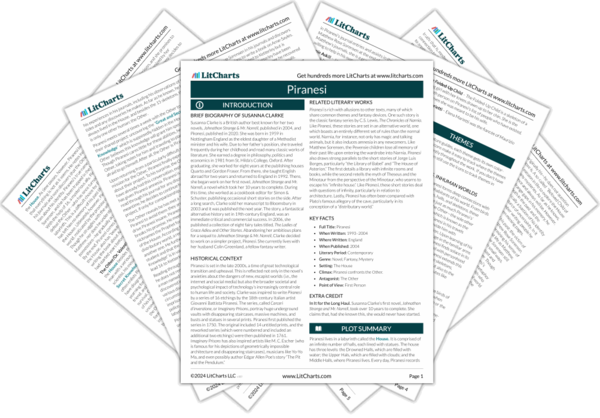More evidence emerges of Piranesi’s unreliability as a narrator. One moment he appears to know what a tree is—at least enough to ask whether they “exist”—and yet the next he seems completely oblivious to the possibility of their existence: confronted by what is clearly a tree’s leaf, he can only wonder at its origins. Despite his seemingly flawless memory of the structure of the House and its various statues, Piranesi’s memory appears to have major gaps.
